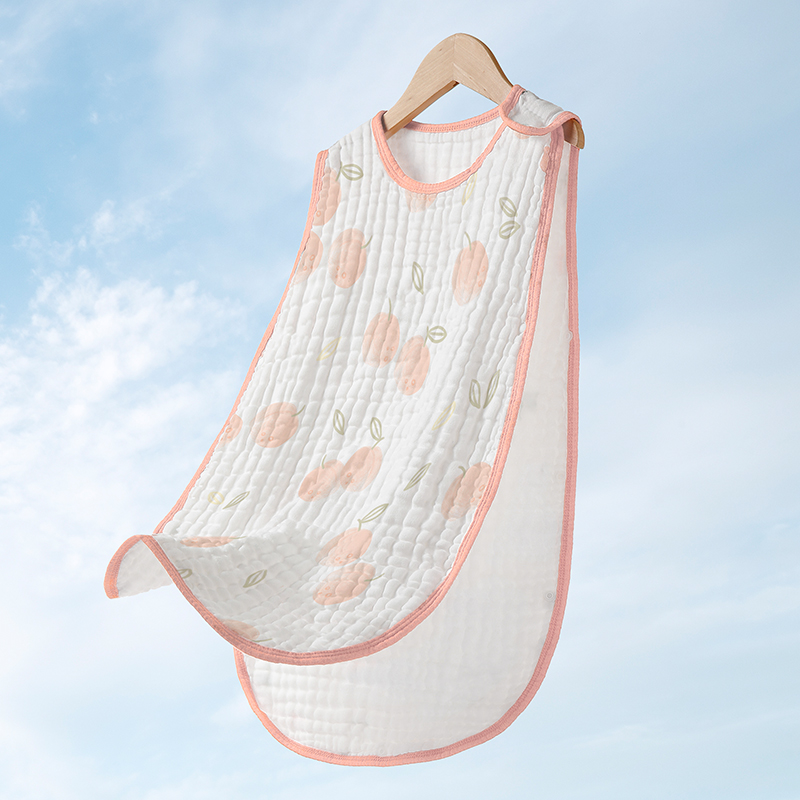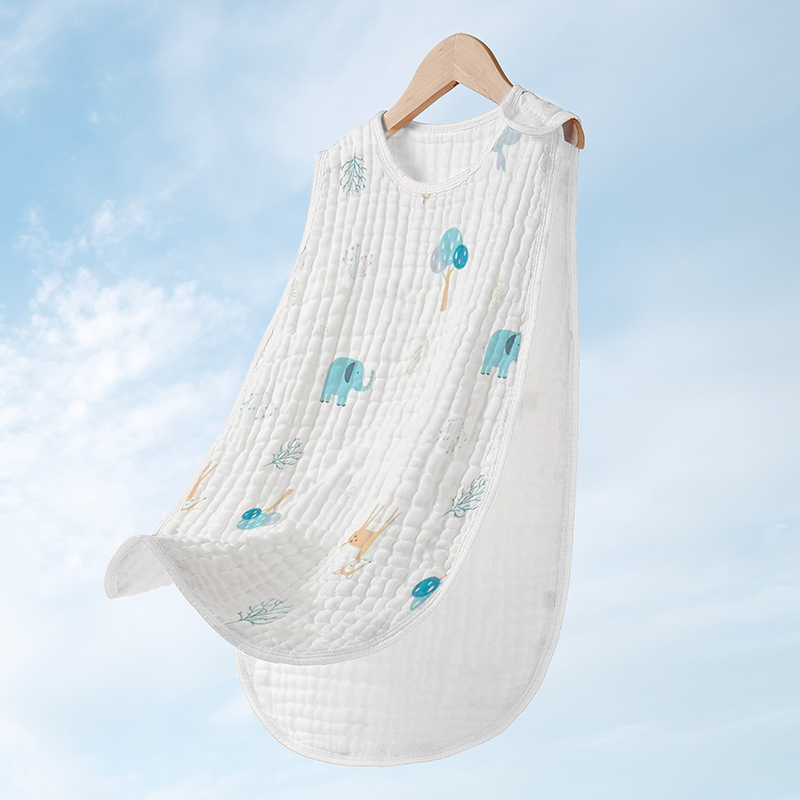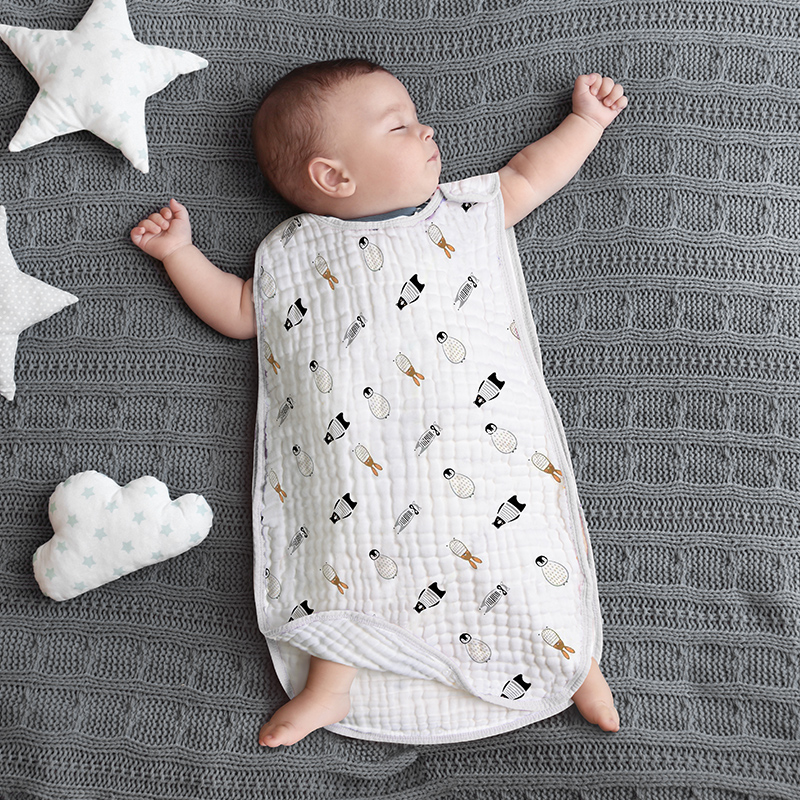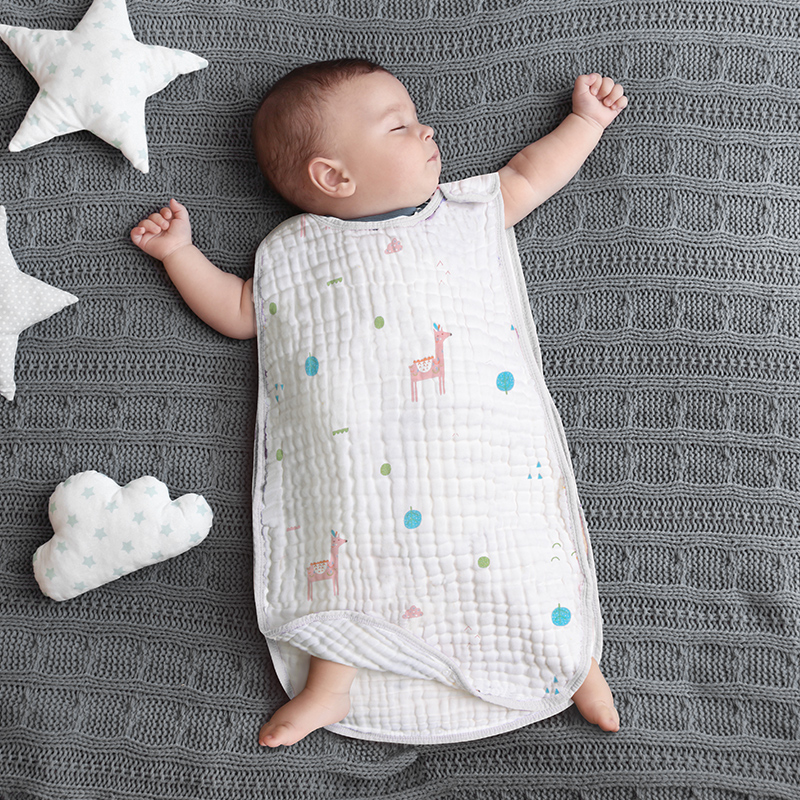Welcoming a newborn into the world is an incredible experience for parents. One essential item that can contribute to a safe and comfortable sleep environment is a newborn baby sleeping bag. These sleeping bags are designed to provide warmth, security, and convenience.
To ensure the optimal use of a newborn baby sleeping bag, here are ten essential tips to follow. From choosing the right size to maintaining proper hygiene, these tips will help parents make the most of this essential baby product.
1. Select the Correct Size :
Newborn baby sleeping bags come in various sizes to accommodate different age groups. It's crucial to choose the right size to ensure a proper fit. Sizes range from S to XL, considering the baby's age and height. A sleeping bag that is too small can be uncomfortable, while an oversized one may pose safety risks. Take accurate measurements and refer to the size chart provided by the manufacturer to select the appropriate size.
2. Consider the Applicable Season :
The fabric and design of the sleeping bag are specifically tailored to different seasons. The gauze fabric used in these sleeping bags is ideal for summer use due to its breathable and lightweight properties. Consider the climate and season when choosing a sleeping bag for your newborn. This will help regulate their body temperature and ensure their comfort throughout the night.
3. Maintain Proper Room Temperature :
In addition to the sleeping bag, it's important to maintain an appropriate room temperature for your baby's comfort and safety. The ideal temperature for a baby's room is around 68-72°F (20-22°C). Use a room thermometer to monitor the temperature and adjust it accordingly. Avoid overheating or chilling your baby by ensuring a comfortable environment.
4. Dress Your Baby Appropriately:
The baby sleeping bag provides warmth, but it's essential to dress your baby appropriately underneath the sleeping bag. Choose lightweight and breathable clothing suitable for the season. Avoid overdressing your baby, as it may lead to overheating. Dress them in a single layer or a light onesie to ensure their comfort.

5. Ensure Proper Ventilation :
To maintain a healthy sleep environment, ensure proper ventilation in the room. Fresh air circulation helps prevent stuffiness and promotes better sleep. Open a window or use a fan to improve air circulation while keeping the room temperature comfortable.

6. Follow Safe Sleep Practices :
Adhering to safe sleep practices is crucial to reduce the risk of Sudden Infant Death Syndrome (SIDS). Place your baby on their back to sleep, on a firm and flat surface. Avoid pillows, blankets, or stuffed animals in the sleeping area. The baby sleeping bag eliminates the need for loose bedding, providing a safe sleep environment for your little one.
7. Check for Proper Fit :
Regularly check the fit of the sleeping bag as your baby grows. Ensure that the bag is not too tight or restrictive, allowing proper movement of the legs and arms. A comfortable and well-fitted sleeping bag ensures a restful sleep for your baby.

8. Maintain Hygiene:
Cleanliness is crucial when using a newborn baby sleeping bag. Follow the manufacturer's instructions for washing and care. Opt for machine-washable sleeping bags for easy maintenance. Regularly clean the sleeping bag to keep it fresh, hygienic, and free from dirt and allergens.
9. Use the Sleeping Bag Consistently :
Establishing a consistent sleep routine helps babies associate the sleeping bag with sleep time. Use the sleeping bag consistently during naps and nighttime sleep. This will create a familiar and comforting environment, aiding in the baby's transition to sleep.

10. Monitor for Comfort and Safety :
Always monitor your baby's comfort and safety while using the sleeping bag. Check for signs of overheating, such as sweating or flushed skin, and adjust clothing or room temperature accordingly. Ensure that the baby's head remains uncovered and free to facilitate proper airflow.
Newborn baby sleeping bags provide numerous benefits for both babies and parents. By following these ten essential tips, parents can make the most of this essential baby product. From selecting the right size and considering the applicable season to maintaining proper hygiene and ensuring safety, each tip contributes to a comfortable and secure sleep environment for your little one. Prioritizing your baby's comfort and safety during sleep lays the foundation for healthy sleep habits and overall well-being. With the right care and attention, using a newborn baby sleeping bag can enhance your baby's sleep experience and provide peace of mind for parents.
11. Follow the Manufacturer's Instructions :
Each newborn baby sleeping bag may come with specific usage instructions from the manufacturer. It's crucial to carefully read and follow these instructions to ensure proper usage. The manufacturer's guidelines may include information on washing, drying, and maintaining the sleeping bag, as well as any specific safety precautions to be aware of.

12. Be Mindful of Sibling Interactions :
If you have older siblings in the house, it's important to supervise their interactions with the baby sleeping bag. Older siblings may be curious and want to touch or play with the sleeping bag. Ensure that they do not cover the baby's face or create any potential hazards. Educate older siblings about the importance of the baby's safety and encourage gentle interactions.

13. Consider the Baby's Mobility :
As your baby grows and becomes more mobile, they may start to move around in their sleep. Pay attention to how the sleeping bag accommodates their mobility. Ensure that the baby has enough room to kick their legs and move their arms comfortably within the sleeping bag. Choosing a sleeping bag with a vest-style design allows for better mobility while keeping the torso warm.

14. Take Note of Diaper Changes :
Babies may require diaper changes during the night. Opt for a newborn baby sleeping bag that allows easy access for diaper changes. Look for features such as zippers or snaps that can be opened quickly and conveniently. This will make nighttime diaper changes more efficient and less disruptive to your baby's sleep.

15. Use the Sleeping Bag for Travel:
A newborn baby sleeping bag can be a practical accessory for traveling with your little one. Whether you're staying at a relative's house or going on a vacation, bringing the sleeping bag can help provide a familiar and comfortable sleep environment for your baby. It's especially useful if you're uncertain about the bedding arrangements at your destination.
16. Transition Gradually :
If you have been swaddling your baby and want to transition to a sleeping bag, it's advisable to do so gradually. Start by leaving one arm out of the swaddle and then both arms before introducing the sleeping bag. This gradual transition allows your baby to adjust to the change in sleepwear and can help ease the transition process.

17. Choose Age-Appropriate Fabrics :
As your baby grows, you may need to consider different fabrics for the sleeping bag. While gauze is ideal for summer use, you might want to explore warmer and cozier fabrics for colder seasons. Look for sleeping bags made from materials such as cotton or fleece that provide insulation and warmth. Ensure that the fabric is soft, hypoallergenic, and gentle on your baby's skin.

18. Keep an Extra Sleeping Bag :
Having an extra newborn baby sleeping bag on hand can be beneficial. Babies can be messy, and accidents such as spit-up or diaper leaks can occur during the night. Having a spare sleeping bag ensures that you can quickly replace a soiled one without disrupting your baby's sleep. It also comes in handy when one sleeping bag is being washed or needs maintenance.
19. Monitor for Signs of Discomfort :
While newborn baby sleeping bags are designed for comfort, it's important to monitor your baby for any signs of discomfort. Babies cannot communicate their discomfort verbally, so be attentive to non-verbal cues. If your baby is excessively fussy, restless, or has difficulty settling in the sleeping bag, it may indicate discomfort. Check for factors such as temperature, clothing, or fit that could be causing discomfort.

20. Seek Professional Advice if Needed :
If you have concerns or questions about using a newborn baby sleeping bag, don't hesitate to seek professional advice. Consult with your pediatrician, a lactation consultant, or a certified sleep consultant. They can provide personalized guidance and address any specific concerns you may have about using the sleeping bag for your baby.

Using a newborn baby sleeping bag can greatly enhance your baby's sleep experience while providing parents with peace of mind. By following these essential tips, parents can ensure optimal comfort, safety, and convenience for their little ones. From selecting the right size and fabric to maintaining proper hygiene and monitoring for signs of discomfort, each tip contributes to a positive sleep environment for your baby. Remember, every baby is unique, so trust your instincts as a parent and make adjustments as needed to meet your baby's individual needs. With the right care and attention, the newborn baby sleeping bag can become an indispensable tool in helping your baby sleep soundly and peacefully.




Post a Comment